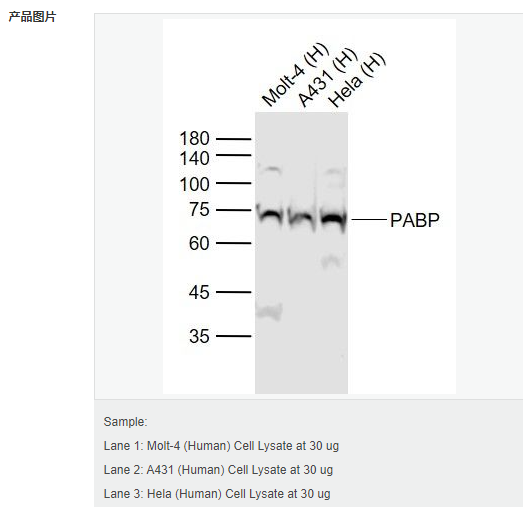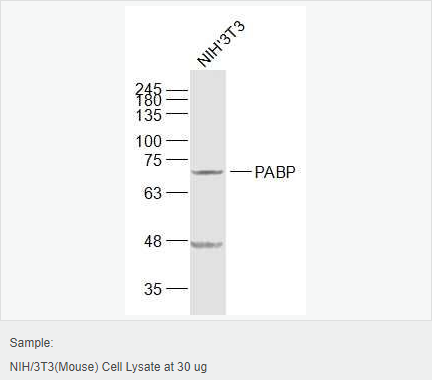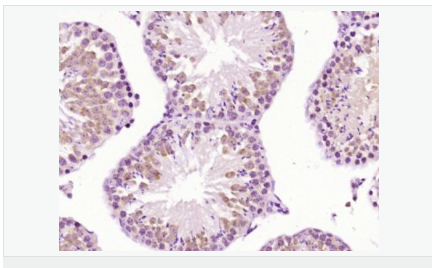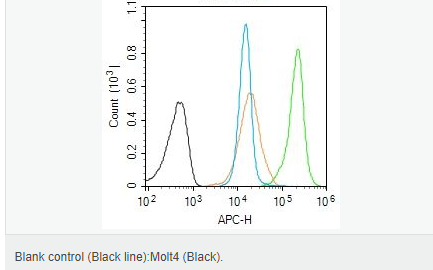

貨號(hào)
產(chǎn)品規(guī)格
售價(jià)
備注
BN40972R-100ul
100ul
¥2360.00
交叉反應(yīng):Human,Mouse,Rat(predicted:Pig,Horse,Rabbit) 推薦應(yīng)用:WB,IHC-P,IHC-F,IF,Flow-Cyt,ELISA
BN40972R-200ul
200ul
¥3490.00
交叉反應(yīng):Human,Mouse,Rat(predicted:Pig,Horse,Rabbit) 推薦應(yīng)用:WB,IHC-P,IHC-F,IF,Flow-Cyt,ELISA
產(chǎn)品描述
| 英文名稱(chēng) | PABP |
| 中文名稱(chēng) | 多聚腺苷酸結(jié)合蛋白抗體 |
| 別 名 | PAB 1; PAB1; PABP 1; PABP1; PABP-1; PABPC 1; PABPC1; PABPC2; PABPL1v Poly A binding protein 1; Poly A binding protein cytoplasmic 1; Polyadenylate binding protein 1. |
| 研究領(lǐng)域 | 免疫學(xué) 信號(hào)轉(zhuǎn)導(dǎo) 轉(zhuǎn)錄調(diào)節(jié)因子 |
| 抗體來(lái)源 | Rabbit |
| 克隆類(lèi)型 | Polyclonal |
| 交叉反應(yīng) | Human, Mouse, Rat, (predicted: Pig, Horse, Rabbit, ) |
| 產(chǎn)品應(yīng)用 | WB=1:500-2000 ELISA=1:5000-10000 IHC-P=1:100-500 IHC-F=1:100-500 Flow-Cyt=1ug/Test IF=1:100-500 (石蠟切片需做抗原修復(fù)) not yet tested in other applications. optimal dilutions/concentrations should be determined by the end user. |
| 分 子 量 | 70kDa |
| 細(xì)胞定位 | 細(xì)胞核 細(xì)胞漿 |
| 性 狀 | Liquid |
| 濃 度 | 1mg/ml |
| 免 疫 原 | KLH conjugated synthetic peptide derived from human PABP:101-200/636 |
| 亞 型 | IgG |
| 純化方法 | affinity purified by Protein A |
| 儲(chǔ) 存 液 | 0.01M TBS(pH7.4) with 1% BSA, 0.03% Proclin300 and 50% Glycerol. |
| 保存條件 | Shipped at 4℃. Store at -20 °C for one year. Avoid repeated freeze/thaw cycles. |
| PubMed | PubMed |
| 產(chǎn)品介紹 | This gene encodes a poly(A) binding protein. The protein shuttles between the nucleus and cytoplasm and binds to the 3' poly(A) tail of eukaryotic messenger RNAs via RNA-recognition motifs. The binding of this protein to poly(A) promotes ribosome recruitment and translation initiation; it is also required for poly(A) shortening which is the first step in mRNA decay. The gene is part of a small gene family including three protein-coding genes and several pseudogenes.[provided by RefSeq, Aug 2010]. Function: Binds the poly(A) tail of mRNA. May be involved in cytoplasmic regulatory processes of mRNA metabolism such as pre-mRNA splicing. Its function in translational initiation regulation can either be enhanced by PAIP1 or repressed by PAIP2. Can probably bind to cytoplasmic RNA sequences other than poly(A) in vivo. Involved in translationally coupled mRNA turnover. Implicated with other RNA-binding proteins in the cytoplasmic deadenylation/translational and decay interplay of the FOS mRNA mediated by the major coding-region determinant of instability (mCRD) domain. Involved in regulation of nonsense-mediated decay (NMD) of mRNAs containing premature stop codons; for the recognition of premature termination codons (PTC) and initiation of NMD a competitive interaction between UPF1 and PABPC1 with the ribosome-bound release factors is proposed. Subunit: Component of a multi subunit autoregulatory ribonucleoprotein complex (ARC), at least composed of IGF2BP1, PABPC1 and CSDE1. Interacts with IGF2BP1. Subcellular Location: Cytoplasm. Nucleus. Tissue Specificity: Ubiquitous. Post-translational modifications: Phosphorylated by MAPKAPK2. Methylated by CARM1. Arg-493 is dimethylated, probably to asymmetric dimethylarginine. Similarity: Belongs to the polyadenylate-binding protein type-1 family. Contains 1 PABC domain. Contains 4 RRM (RNA recognition motif) domains. SWISS: P11940 Gene ID: 26986 Database links: Entrez Gene: 26986 Human Entrez Gene: 18458 Mouse Omim: 604679 Human SwissProt: P11940 Human SwissProt: P29341 Mouse Unigene: 387804 Human Unigene: 371570 Mouse Unigene: 127813 Rat Important Note: This product as supplied is intended for research use only, not for use in human, therapeutic or diagnostic applications. |



